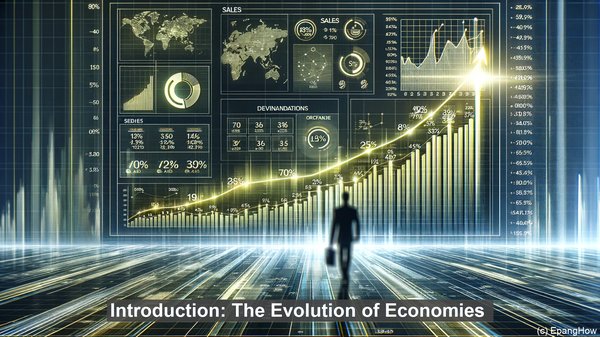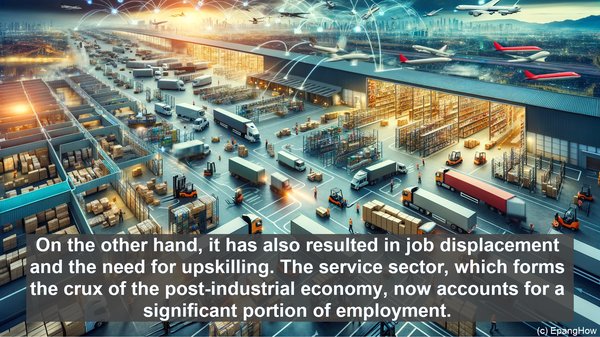Introduction: The Evolution of Economies
Hello everyone! Welcome to today’s article, where we’ll be delving into the intriguing world of economies. Specifically, we’ll be comparing and contrasting the post-industrial and industrial economies. Understanding these economic phases is crucial in comprehending the trajectory of nations and their development. So, let’s dive right in!
Defining the Industrial Economy
The industrial economy, also known as the ‘first industrial revolution,’ emerged during the 18th century. It was characterized by the shift from agrarian societies to those centered around manufacturing and mechanization. Key features of this era included the establishment of factories, the utilization of steam power, and the mass production of goods. Industries such as textiles, iron, and coal mining flourished, leading to urbanization and the rise of the working class.

The Post-Industrial Economy: A Paradigm Shift
As we fast forward to the latter half of the 20th century, we witness the advent of the post-industrial economy. This phase, also referred to as the ‘third industrial revolution,’ marks a significant departure from the manufacturing-centric model. Instead, it emphasizes services, information, and knowledge-based sectors. The rise of technology, particularly the internet, has been instrumental in this transition. Concepts like e-commerce, digital marketing, and software development have become the backbone of the post-industrial economy.

Key Differences: Industrial vs. Post-Industrial
While the industrial economy thrived on physical production, the post-industrial economy revolves around intangible assets. In the former, tangible goods held more prominence, whereas in the latter, intellectual property and human capital are key drivers. Additionally, the industrial economy was characterized by rigid hierarchies and standardized processes, whereas the post-industrial economy is more flexible and adaptable. The focus has shifted from ‘mass production’ to ‘mass customization,’ catering to individual preferences.
Impacts of the Transition
The shift from an industrial to a post-industrial economy has had far-reaching consequences. On one hand, it has led to increased productivity, efficiency, and innovation. On the other hand, it has also resulted in job displacement and the need for upskilling. The service sector, which forms the crux of the post-industrial economy, now accounts for a significant portion of employment. This shift has also altered the urban landscape, with the rise of ‘technopoles’ and ‘innovation clusters.’
